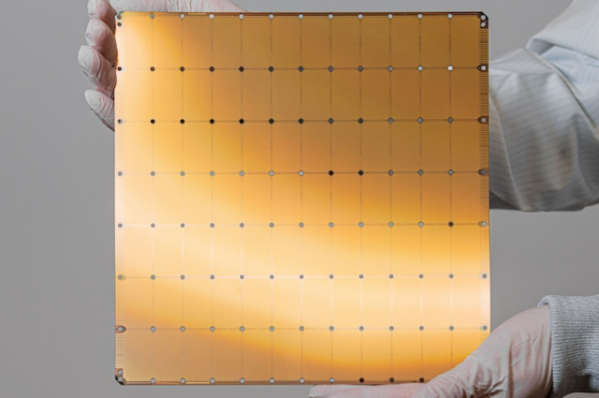A face-to-face workshop at the Leibniz Supercomputing Centre demonstrated the potential of Cerebras Systems’s CS-2 system for science and research: In addition to training large language models and pattern recognition, it can also accelerate high-performance computing applications.
New technologies arouse curiosity but also require explanation: “The architecture of the CS-2 system is unique and new,” says Michael Gerndt, Professor at the Department of Computer Science at the Technical University of Munich (TUM). The scientist is taking part in a workshop at the Leibniz Supercomputing Centre (LRZ) on the functions and possibilities of the CS-2 system from Cerebras Systems, a computer specialising in artificial intelligence applications that has been available to LRZ researchers for around two years thanks to Bavaria’s Hightech-Agenda. Gerndt is researching parallel systems and programming tools and wants to learn more about the system: “I want to use it in my lecture on computer architecture, and it can also be used for HPC applications beyond machine learning, which is also interesting for us.
Whether information about an innovative computer architecture or tips and tricks for working with it: In July this year, the Cerebras workshop brought together almost 30 researchers at the LRZ, including professors and doctoral students, who wanted to get to know the innovative supercomputer with the world’s largest chip from the ground up and learn about LRZ’s access modalities: “The aim of the workshop was, on the one hand, to build a community with researchers who can use the CS-2 system,” reports Dr Michael Hoffmann from the LRZ’s Big Data & Artificial Intelligence (BDAI) team. “We were also able to learn a few tricks and strategies for using it ourselves.”
Read more about the hardware installment in the press releases of the LRZ..

A face-to-face workshop at the Leibniz Supercomputing Centre demonstrated the potential of Cerebras Systems’s CS-2 system for science and research: In addition to training large language models and pattern recognition, it can also accelerate high-performance computing applications.
New technologies arouse curiosity but also require explanation: “The architecture of the CS-2 system is unique and new,” says Michael Gerndt, Professor at the Department of Computer Science at the Technical University of Munich (TUM). The scientist is taking part in a workshop at the Leibniz Supercomputing Centre (LRZ) on the functions and possibilities of the CS-2 system from Cerebras Systems, a computer specialising in artificial intelligence applications that has been available to LRZ researchers for around two years thanks to Bavaria’s Hightech-Agenda. Gerndt is researching parallel systems and programming tools and wants to learn more about the system: “I want to use it in my lecture on computer architecture, and it can also be used for HPC applications beyond machine learning, which is also interesting for us.
Whether information about an innovative computer architecture or tips and tricks for working with it: In July this year, the Cerebras workshop brought together almost 30 researchers at the LRZ, including professors and doctoral students, who wanted to get to know the innovative supercomputer with the world’s largest chip from the ground up and learn about LRZ’s access modalities: “The aim of the workshop was, on the one hand, to build a community with researchers who can use the CS-2 system,” reports Dr Michael Hoffmann from the LRZ’s Big Data & Artificial Intelligence (BDAI) team. “We were also able to learn a few tricks and strategies for using it ourselves.”
Read more about the hardware installment in the press releases of the LRZ..